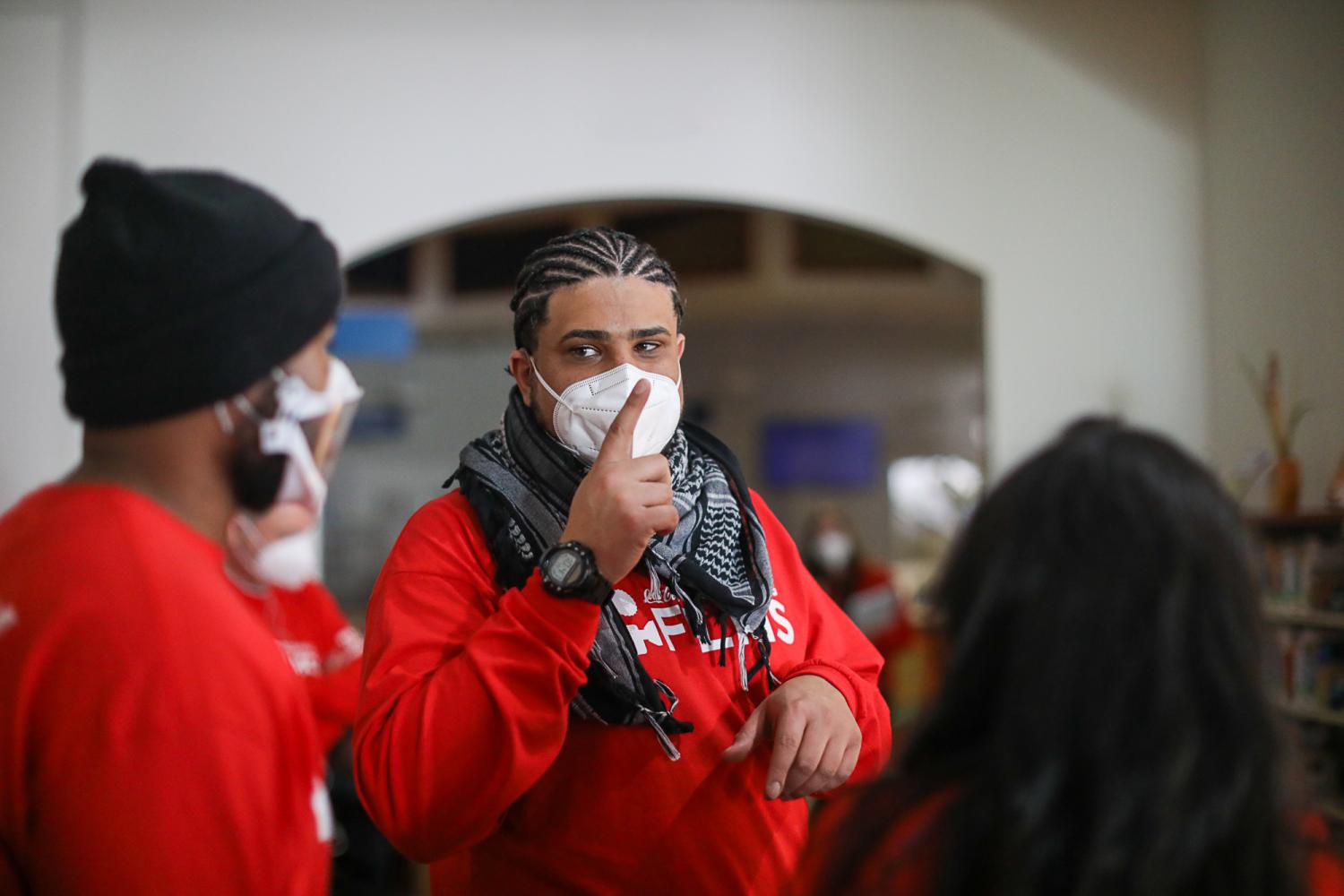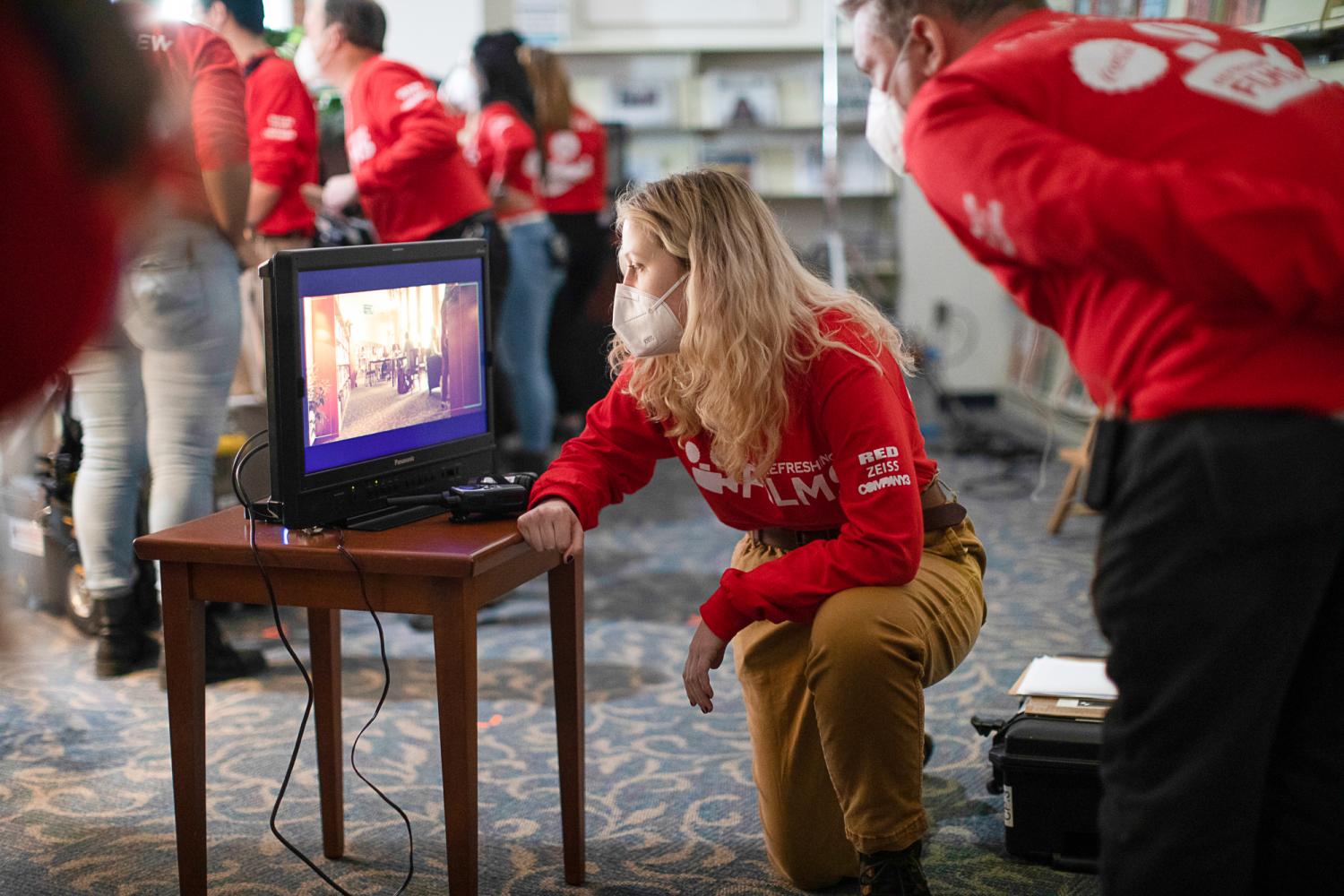Imagine getting the once-in-a-lifetime opportunity to make a commercial for Coca-Cola that would get shown in movie theaters around the country. For second-year film production student, Anna McClanahan, and first-year grad student, Gabriel Ponte-Fleary, this dream could become a reality.
By proposing a compelling love story between hearing and deaf characters, McClanahan and Ponte-Fleary have been selected as finalists for the Coca-Cola Refreshing Films contest.
“We had a very warm aesthetic we wanted to go for, something wholesome, nostalgic, and magical, and hair and makeup really helped with that.
Refreshing Films
According to thes stated on the Coca-Cola website, “The Coca-Cola Refreshing Films program is a platform to provide students, from partnered schools, the opportunity to create content for the big screen.”
For over 20 years, 17 colleges have competed in this program. This year marks the first time, for the first time, RIT students have been given the opportunity to compete.!
Not only is thiswill this be the first year that RIT students will beare included in the competition, but also the first time that the Refreshing Films Program will includehas included the
The application process is undoubtedly an undertaking, but thatthis didn’t stop McClanahan and Ponte-Fleary from taking it head-on.
“There’s a script, and we work together to develop a first draft,” Ponte-Fleary explainedstated. “We got help from two [School Of Film and An] faculty members, Jack Beck and Frank Deese, and went through the whole drafting iteration process.”
TheIn addition, the students also had to create a budget sheet, with a hypothetical limitbudget of $18,000, and submit all application materials, along with a physical application. McClanahan discussedtalked about having to partner up with another student, where. In that partnership, one student would act asbe the producer and the other student could fillan be any other role, typically the director.
“We got selected for semi-finals, which was 15 scripts out of 500,” McClanahan explained. “From there you add things like a storyboard, update your script, update your budget, have lots of meetings with [Coca-Cola], then you submit it; from there, there is one winner.”
Needless to say, there wasis a substantial amount of work put into this project .
Balancing a Budget
Once selected as finalists, the students actually received thean $18,000 budget to professionally produce their short film.
DoesThink $18,000 sound likeis a lot of money? In the world of professional commercials, that budget is stretched thinThink again. The cost of renting equipment, providing food, attire, hair/makeup, paying the actors, crew
“It was a challenge,” Ponte-Fleary said, “$18,000 doesn’t go a long way and we had to re-analyze lots of times.”
Although the students were not able to receive financial help, other people were allowed to offer assistancetheir services, or even pay for services.
For example, Dr. Gerard Buckley, president of the National Technical Institute for the DeafNTID president, generously covered the interpreting costs. Shanti Thakur, director of the School of Film and Animation (SOFA), helped make sure all of the project's different pieces ran smoothly.
Other contributors were the College of Art and Design (CAD), who helped cover insurance for the equipment, and Sew-n-City, who helped with hair and makeup.
With all of this assistancethese elements, McClanahan and Ponte-Fleary were able to create the look and feel they had imagined.
“We had a very warm aesthetic we wanted to go for, something wholesome, nostalgic, and magical, and hair and makeup really helped with that, " McClanahan said..
Deaf Representation
A largehuge part of the film was the inclusion of the
McClanahan explainedtalked about the inspiration for the film coming from representing the type of community we have at RIT, – especially since this is the first year RIT is able to participate. – and The team made sure to incorporate this in all aspects of the film. Originally, the plot was centered around two characters: one hearing and one deaf, which could originally be interpreted as hanging out as friends. AHowever, after meeting with the Coca-Cola company, they decided to make it a love story.
“I wanted to make sure I had deaf crew members because as a hearing person, it would be inauthentic not to have anyone on the set if I don’t understand that community,” McClanahan said. “Also working with Gabe and being able to add those elements to the character, being accurate with the language, mannerisms, and culture.”
Although there have been more deaf characters on the big screen in recent times – Echo in Hawkeye and Makari in Eternals, to name a few – this is the first time Coca-Cola would represent the deaf community, providing a monumental step towards the representation of more diversity within the film industry.
“Really it’s amazing,” Ponte-Fleary saidexclaimed. “I am very proud that we are able to do this because it is huge. [Coca-Cola] has never had the deaf community involved in anything on the big screen… I mean really we’re making history with it.”
Amazing Perspectives
This once-in-a-lifetime opportunity is just the start for McClanahan and Ponte-Fleary. The experience they have had so far is unmatched. From finding out they were chosen as semi-finalists, to watching their script come to life, the process has been unimaginable.
“It was an amazing feeling,” said Ponte-Fleary said., “Yyou never know how far you are going to go.”
One thing McClanahan would like others to take away from the project is thatthis is how you shouldn’t be afraid to branch out into other communities and cultures.
“When you bring different perspectives together, it creates really great films. It’s a great time to explore and learn about different people,” McClanahan said. started, “If you’re only creating things from your perspective, there are so many other communities that don’t get represented.”
Finally, McClanahan and Ponte-Fleary wanted to thank everyone that helped make their film possible., Tthere was so much support inside and out, and they could never be more thankful.
The Coca-Cola Refreshing Films challenge is all about empowering the filmmakers of the next generation. By being the first students to not only represent RIT but also the deaf community in their film, McClanahan and Ponte-Fleary are undoubtedly empowering generations to come.
As stated by Ponte-Fleary, "The vision was to make sure it was all of our dreams, not just the two of us. Big thanks to everyone involved,." Ponte-Fleary said.
“It was an amazing feeling. You never know how far you are going to go.”











